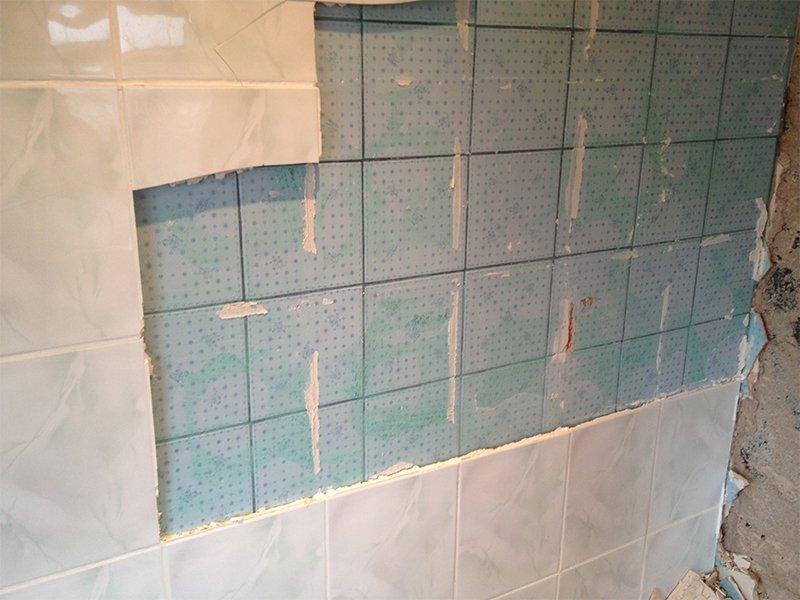Have you ever wondered if the adhesive you use to secure tiles on your floor would work just as well on your walls? It’s a question many DIY enthusiasts and home renovators ask, and the answer isn’t always straightforward. While it’s tempting to use one product for both applications, there are some key differences between floor and wall tile adhesive that can affect your project’s success.

Image: buildiro.com
This article delves into the world of tile adhesives and explores the nuances of using floor tile adhesive on walls. We’ll uncover the pros and cons, dissect the underlying chemistry, and provide practical advice to ensure a strong and long-lasting tiled surface. Whether you’re a seasoned DIYer or a first-timer, this comprehensive guide will help you make informed decisions about your tile installation.
Understanding Tile Adhesive Basics
The Chemistry of Adhesion
Before diving into the specifics of floor versus wall tile adhesive, let’s understand the fundamental principles of adhesion. Tile adhesives are typically composed of a combination of polymers, cement, and fillers. These ingredients work together to form a strong bond between the tile and the substrate (your wall or floor). The adhesion strength depends on factors like:
- The substrate’s properties: Porosity, smoothness, and material type (e.g., concrete, drywall, plywood).
- The tile material: Ceramic, porcelain, natural stone, glass, etc.
- The adhesive’s formulation: Strength, setting time, and flexibility.
Types of Tile Adhesives
Tile adhesives come in various forms, each tailored to specific applications. Common types include:
- Thin-set mortar: A popular option for both floors and walls, offering good adhesion and versatility. Requires a trowel for application.
- Organic adhesives: Often used for mosaics and decorative tiles, featuring a flexible polymer base, less strong than thin-set mortar.
- Epoxy-based adhesives: Extremely strong and durable, ideal for demanding applications like outdoor installations or high-traffic areas.
- Mastics: Pre-mixed, ready-to-use adhesives, generally less strong than thin-set mortar, suitable for interior installations.

Image: truediy.net
The Debate: Floor Tile Adhesive on Walls
Pros of Using Floor Tile Adhesive on Walls
In some situations, using floor tile adhesive for wall applications can be advantageous:
- Increased Strength: Floor tile adhesive is designed for heavier loads, making it more robust for wall tiles, particularly if you’re using large format tiles.
- Reduced Movement: Floor tile adhesive offers better resistance to movement and shrinkage, which can be crucial in situations where the substrate is prone to shifting.
- Cost-effectiveness: If you already have floor tile adhesive on hand, using it for your wall tiles can save you some money.
Cons of Using Floor Tile Adhesive on Walls
Despite its potential advantages, using floor tile adhesive on walls also comes with certain drawbacks:
- Reduced Flexibility: Floor tile adhesive is designed for rigid substrates like concrete. On walls, where the substrate might move or expand, this rigidity could lead to cracking or tile dislodgement.
- Increased Difficulty: Floor tile adhesive is often thicker and less forgiving than wall tile adhesive, making it more challenging to apply and achieve a smooth, even layer.
- Higher Risk of Sagging: Heavy tiles or large-format tiles applied with floor tile adhesive can sag on walls, especially if they are not well-supported by the substrate.
Practical Tips for Using Floor Tile Adhesive on Walls
If you decide to use floor tile adhesive for your wall tile project, keep the following tips in mind:
- Choose the Right Type: Opt for a modified thin-set mortar specifically designed for both floor and wall applications, typically labeled as “multi-purpose” or “for both floors and walls.”
- Prepare the Substrate: Ensure your walls are clean, dry, and level. Smooth out any imperfections and apply a suitable primer if necessary.
- Apply Thin Layers: Use a thinner trowel to create thin, even layers of adhesive, which will help prevent sagging and ensure proper adhesion.
- Use Backer Board: For extra support and stability, consider using a backer board behind your tiles, especially for large format tiles or areas with significant movement.
- Allow for Curing Time: Adhesive needs adequate time to cure before you install tiles, carefully check the manufacturer’s instructions.
Alternatives to Floor Tile Adhesive
If you’re unsure about using floor tile adhesive on your walls, or if you’re concerned about the potential downsides, there are other excellent adhesive options available:
- Wall Tile Adhesive: Specifically formulated for wall applications, it’s more flexible and less rigid than floor tile adhesive. This flexibility allows for movement in the substrate without compromising adhesion.
- Epoxy-based Adhesives: While generally more expensive, epoxy adhesives offer incredible strength and durability, making them suitable for challenging wall installations.
Can You Use Floor Tile Adhesive On Walls
https://youtube.com/watch?v=SDPVO4MZ784
Conclusion: A Balanced Approach to Tile Installation
Ultimately, the decision to use floor tile adhesive on walls is a matter of careful consideration. Weigh the potential advantages against the risks, take into account the specific project requirements, and choose the adhesive that best suits your needs. Always consult manufacturer instructions for proper installation and curing times. And remember, investing in high-quality adhesive is a crucial step towards a successful and long-lasting tile installation. Whether you’re a seasoned pro or a budding DIY enthusiast, understanding the nuances of tile adhesives empowers you to make informed decisions and achieve exceptional results. So go forth, tile your world!





